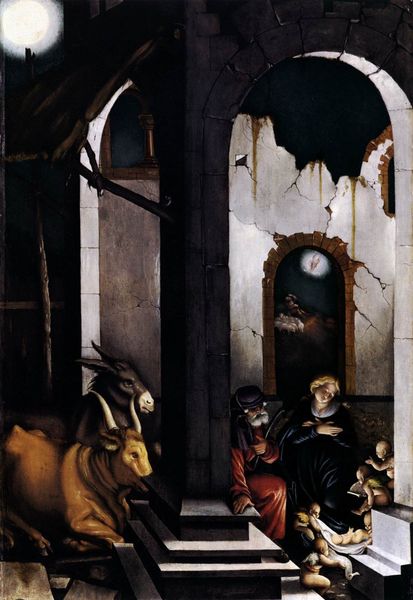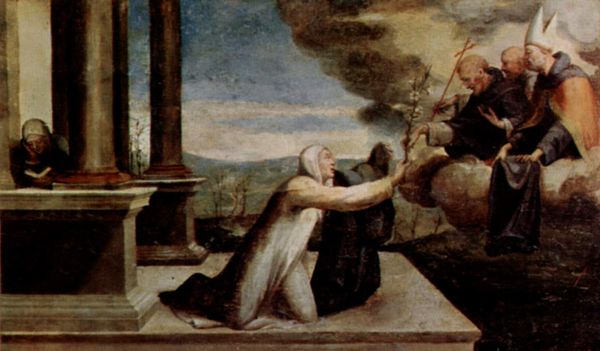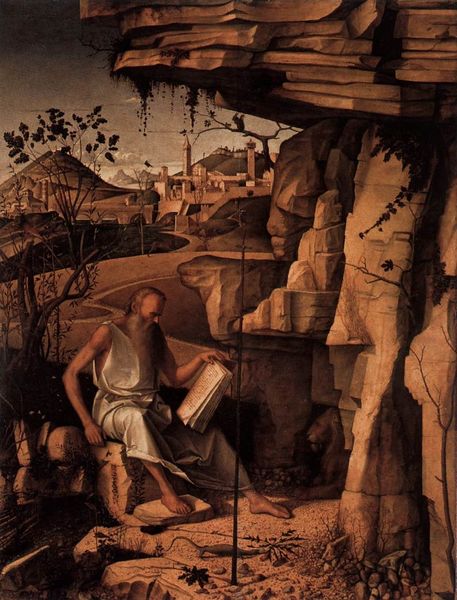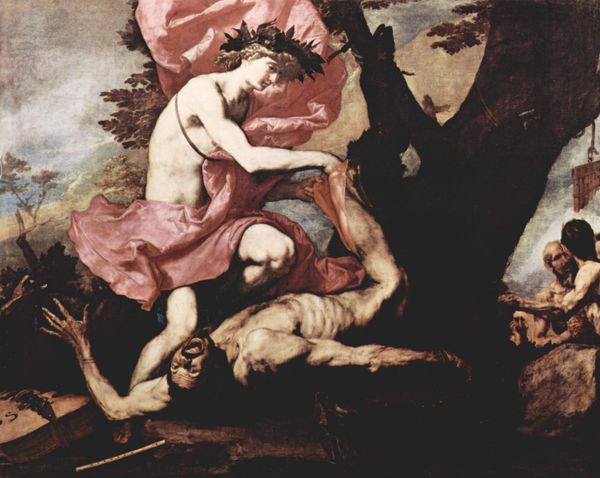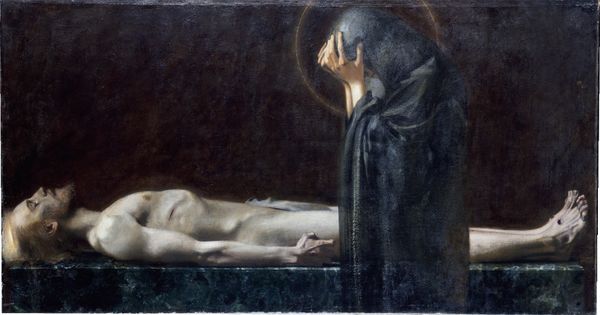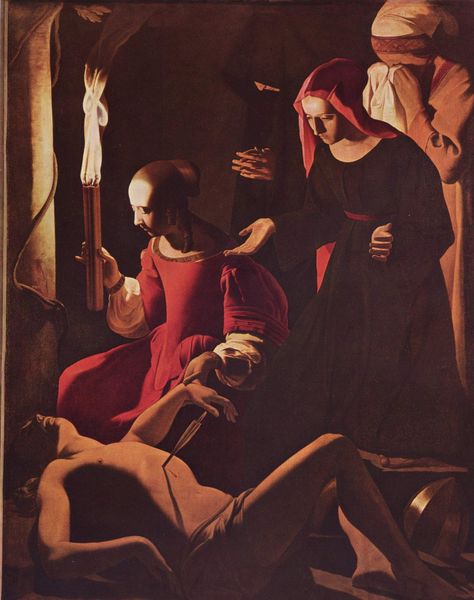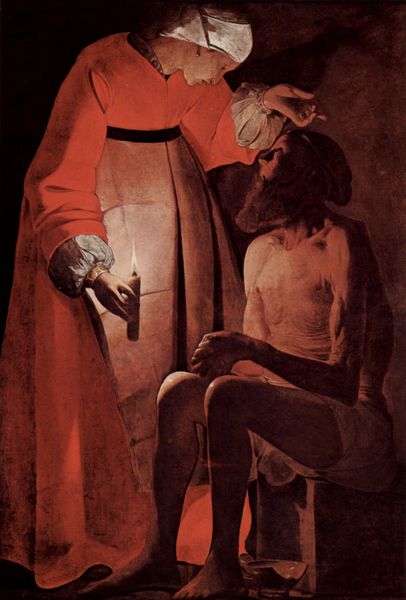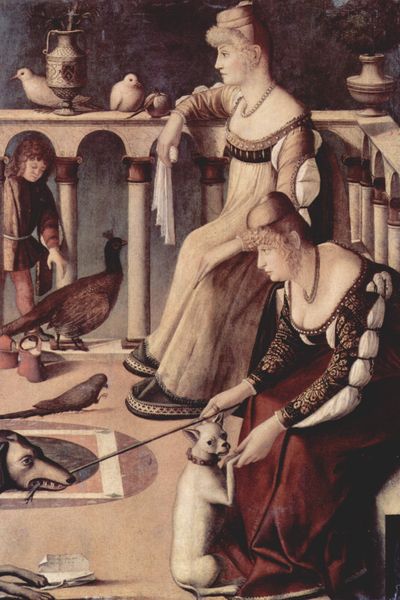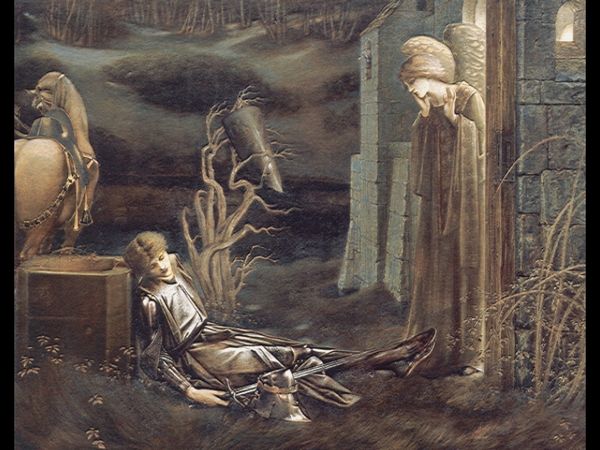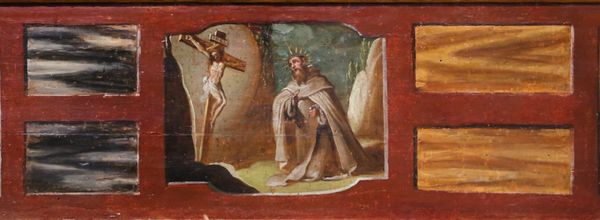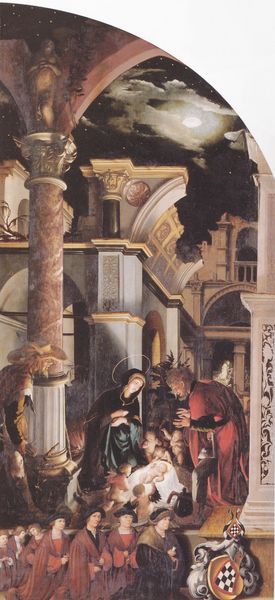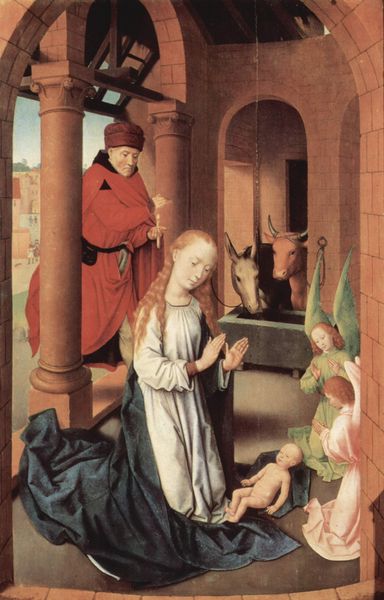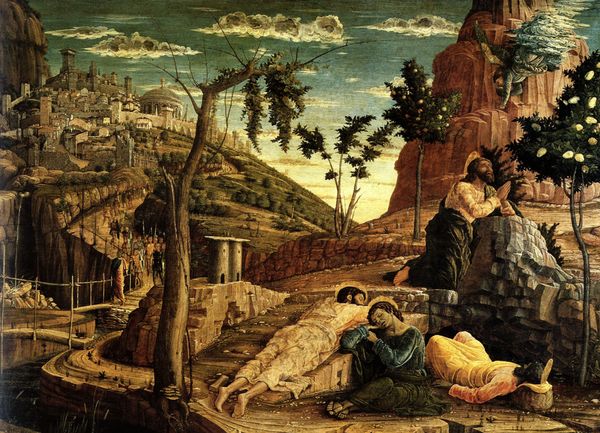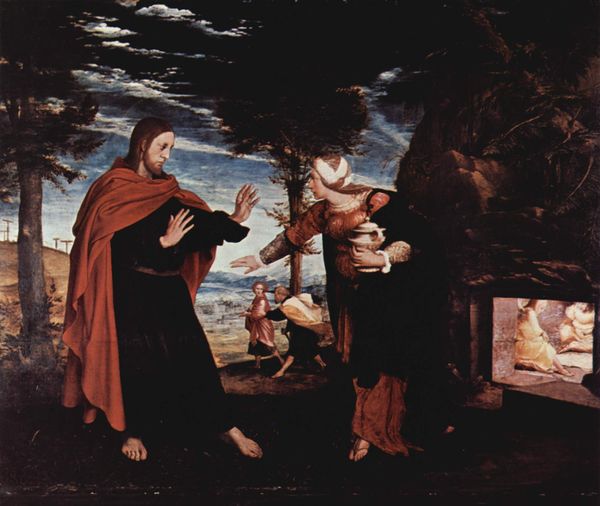
Saint Catherine of Siena receiving the stigmata between Saints Benedict and Jerome (detail) 1517
0:00
0:00
painting, oil-paint
#
portrait
#
high-renaissance
#
painting
#
oil-paint
#
sculpture
#
figuration
#
history-painting
#
italian-renaissance
#
mixed media
#
miniature
Copyright: Public domain
Domenico Beccafumi painted this oil of Saint Catherine in Siena sometime in the first half of the 16th century. As a painter working in the decades after Raphael and Leonardo, Beccafumi found himself in a complex institutional landscape. On the one hand, the Catholic Church remained the dominant patron of the arts, but on the other, artists increasingly saw themselves as intellectuals with a voice in matters of faith and doctrine. The intensity of Catherine’s stigmata is thrown into relief by the hazy landscape in the background. Her stigmata were interpreted as both proof of her special status and as an endorsement of the Dominican order during a period of intense religious upheaval. In commissioning this painting, the Dominicans in Siena sought to assert their own legitimacy and promote their local saint as an example of piety and devotion. Understanding the social and institutional context of art like this depends on careful archival research, theological debates, and the biographies of leading figures in the church. From this, we can see how art negotiated a path between religious orthodoxy and new, humanist values.
Comments
No comments
Be the first to comment and join the conversation on the ultimate creative platform.
